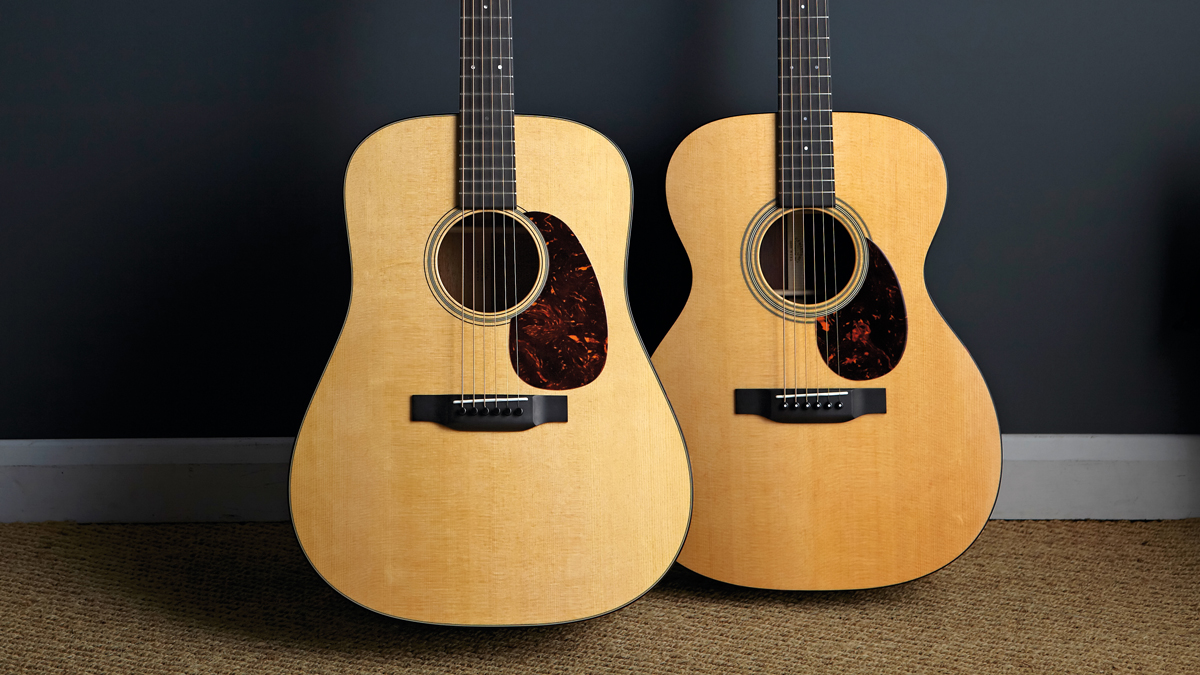
There is arguably more enthusiasm for innovation and experimentation in the acoustic guitar world than for electric guitars. Even so, most acoustics conform to a handful of shapes and sizes that have been around for a century or more.
Many of these body styles were introduced by Martin Guitars, and its model designations are still widely used – irrespective of the manufacturer. As with solidbody electrics, when one or two brands dominate the market, smaller companies tend to copy their successful designs.
American-made guitars really began to diverge from the European tradition during the 1850s. Most ‘classical’ guitars began following the dimensions and fan-bracing pattern employed by the legendary Spanish luthier Antonio De Torres. Meanwhile, over in Pennsylvania, Christian Frederick Martin developed an X-shaped bracing pattern that proved equally influential.
Migrants brought their musical instruments and traditions to America, and smaller gut-string guitars struggled to compete with the volume of fiddles and mandolins. These instruments often used metal strings, and steel guitar strings had pretty much supplanted gut strings by the 1920s.
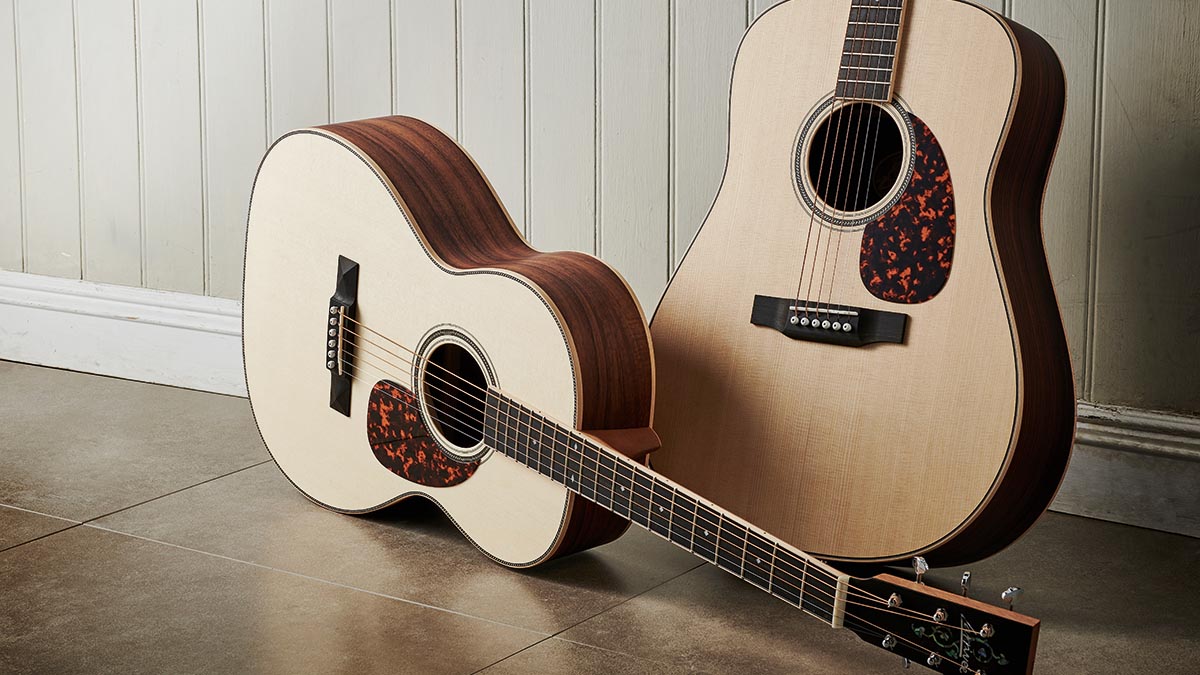
This development unlocked the sonic potential of Martin’s X-brace, but also revealed structural weaknesses. With countless guitarists damaging their older guitars by fitting steel strings, Martin responded by beefing up the bracing to withstand the additional string pull.
It takes more energy to get heavily braced tops to move, which partly negates the volume gain from steel strings. One way around this is to increase the surface area of the soundboard, but larger tops require larger backs, and body depths began to increase, too.
Several new and ever-increasing body sizes were introduced around the turn of the 20th century. Many of these designs still survive, so let’s take a closer look at the main models and their sonic characteristics.
All the latest guitar news, interviews, lessons, reviews, deals and more, direct to your inbox!
Parlour
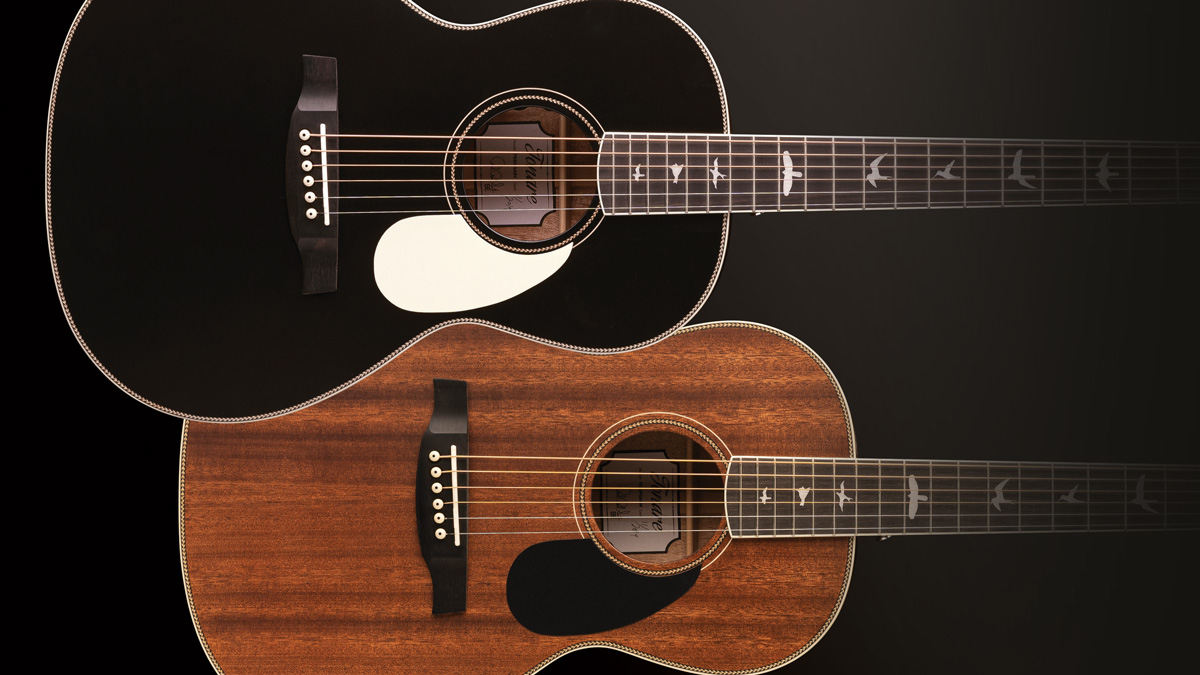
The elongated ‘figure-8’ shape of parlour guitars harks back to multi-course guitars of the Renaissance. Designed for home use and travelling, parlours are sometimes called ‘saddle guitars’ and were carried by cowboys and soldiers during the American Civil War.
By the end of the 19th century, the United States had a thriving industry mass-producing parlour guitars of varying quality. Names such as Stella, Haynes, Bay State and Tilton have vanished, but Washburn survives and the Larson Brothers brand has recently been revived.
Martin’s 1/4 model measured 8 15/16 inches across its lower bout, and model sizes increased in small increments, through to the 12-inch Size 2 and the 12 ¾-inch Size 1. These ‘lap pianos’, as they are sometimes referred to, can be surprisingly loud and very articulate.
Don’t expect deep bass, but trebles should sound sweet, and you can get a punchy and forward midrange with a slightly boxy honk. They produce eerily authentic tones for early blues and ragtime picking, as well as bottleneck.
Many modern manufacturers, such as PRS, offer parlour-sized models, and vintage examples can be found on the usual online sources. Take care to establish that the woods are solid rather than laminated, and budget for a neck reset. Relatively few had sturdy enough X-braces or ladder braces to cope with steel strings, but if you buy wisely, this is the cheapest way to score a vintage Brazilian rosewood acoustic.
0/00
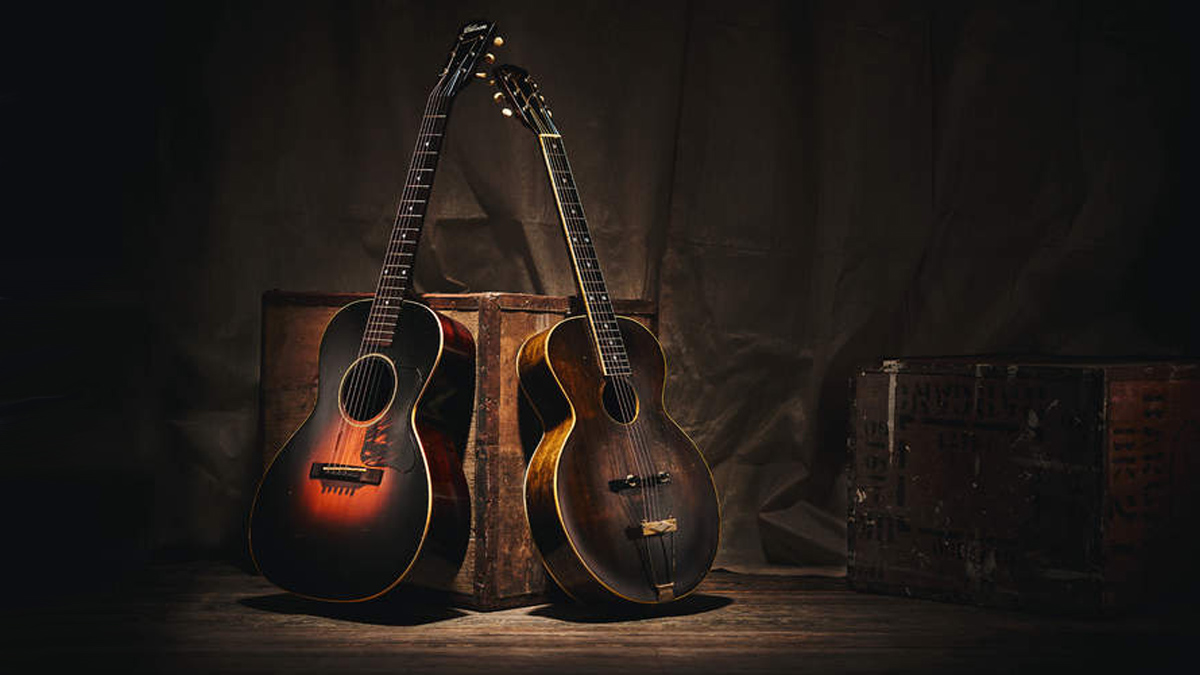
Martin’s Size 0 was introduced in 1854, and at 13 ½ inches wide, 19 1/8 inches long and 4 3/16 inches deep, it remained the largest guitar in the inventory for the next 23 years. Gibson’s L-0 and L-1 flat-tops shared the same body width between 1926 and 1931.
A Size 0 will have a fuller bass response than most parlour guitars, and they’re excellent for recording. We can’t be certain that Robert Johnson played an L-1, but Gibson issued a signature model anyway, while Bob Dylan used an 0-sized ‘Nick Lucas’ model for his Another Side and Bringing It All Back Home albums.
Introduced in 1877, Martin’s 00 ‘Grand Concert’ body measured around 14 1/8 inches wide. At 19 5/8 inches, the 00 was made slightly longer than a Size 0, but it was less deep.
The top’s increased surface area and the body’s greater internal capacity combined to produce a louder and bassier guitar. Martin’s 14-fret 00 was widened to 14 5/16 inches, and the Collings Waterloo model is a highly rated modern version.
000/OM
The 000 became Martin’s largest model in 1902, measuring 15 inches across the lower bout. Like all standard Martin models up to that point, it had a slotted headstock and a neck that joined the body at the 12th fret.
Musical tastes had changed and those players who needed sheer volume to play in jazz bands were more likely to buy an archtop than a flat-top.
During the 1920s, banjos were more popular than guitars, but when the banjo craze started to fade, a famous banjo player called Perry Bechtel approached Martin with a special request that would change everything.
Bechtel was accustomed to an easy access banjo neck, so he asked for a guitar with an extra two frets clear of the body. Martin simply bent the shoulders of a regular 000 body a little tighter, so the shortened body met the neck at the 14th fret rather than the 12th.
Martin also increased the scale length for Bechtel from 24 29/32 to 25 13/32 inches and called the new design the OM or ‘Orchestral Model’. 14th-fret neck joints quickly became standard across Martin’s product line, and scale length is the only difference between a 14-fret 000 and an OM.
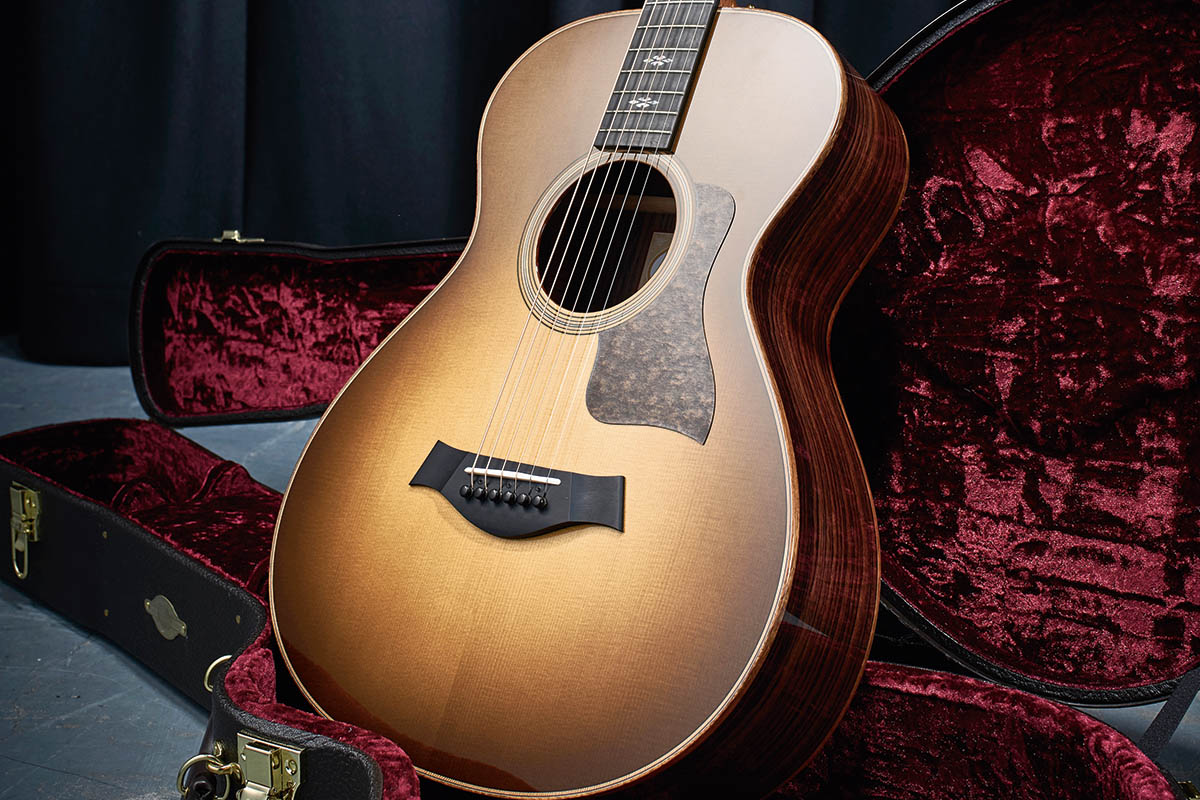
Many consider the 000 and OM models to be the best all-round acoustic guitars out there, and most manufacturers offer their own version – Taylor’s equivalent, for instance, is called the Grand Concert.
Fingerpickers like the deep but well controlled bass that’s found with these models, along with their even frequency response and string-to-string balance. These acoustics also have more than enough projection and volume for rhythm duties, and they’re comfortable to play to boot.
Dreadnought
Martin is widely credited for the first dreadnought-style guitar, but Lyon & Healy’s 1912 catalogue included a Lakeside Jumbo steel-string that measured 16 ¼ inches across, 5 ¼ inches deep and 20 ½ inches long.
Ditson was one of Lyon & Healy’s main dealers and had shops in Boston and New York. Harry L Hunt, who managed the New York shop, suggested a similar design to Martin.

In 1916 Martin produced a big-shouldered, wide-waisted guitar exclusively for Ditson. Surviving examples are recognisably dreadnoughts, but it took until 1931 for Martin to revisit the Ditson plans and begin making a Martin branded version.
Initially called the D-1 and D-2, the designations were soon changed to D-18 and D-28. The dimensions of Martin’s 12-fret dreadnought were 15 5/8 inches wide, 20 15/16 inches long and 4 ¾ inches deep.
The model lost its sloped shoulders and slotted headstock in 1934, when it also changed to a 14th-fret neck join. This second version had square shoulders and, although the width remained the same, the body was shortened to 20 inches, while the depth was increased to 4 7/8 inches.
For those wondering, the dreadnought was named after a British battleship that was launched in 1906, and the shape is now the most copied of all acoustic guitar designs.
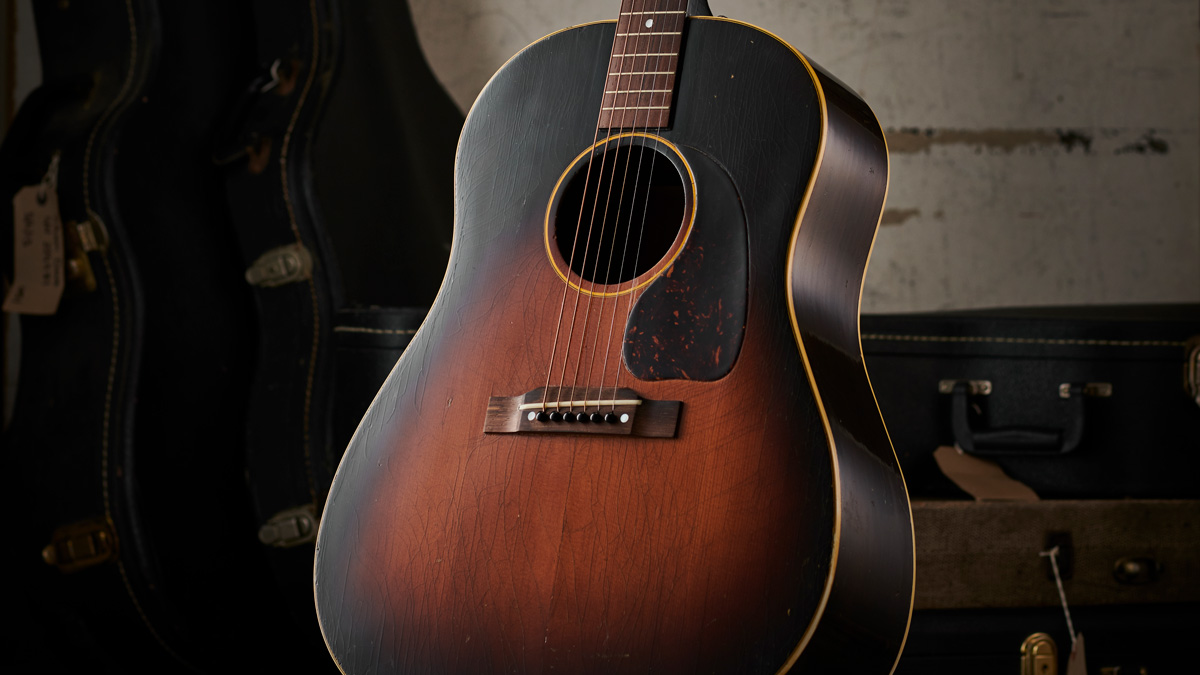
Dreadnoughts are characterised by powerful and sometimes boomy bass coupled with clear treble.
Often exhibiting a scooped midrange, they are ideal for powerful rhythm duties and became the model of choice for bluegrass flatpickers such as Doc Watson and Clarence White. Fingerstylist Bert Jansch used dreadnoughts almost exclusively, especially in later years.
Gibson retained the sloped-shoulder look for J-45 and J-50 dreadnoughts, but adopted the square-shouldered Martin style in 1958 for Epiphone models. Gibson dreadnoughts such as the Hummingbird and the Dove soon followed, with the J-45 and J-50 squaring off in 1969. Slope-shoulder dreads remain popular, with Taylor offering a contemporary version called the Grand Pacific.
Jumbo
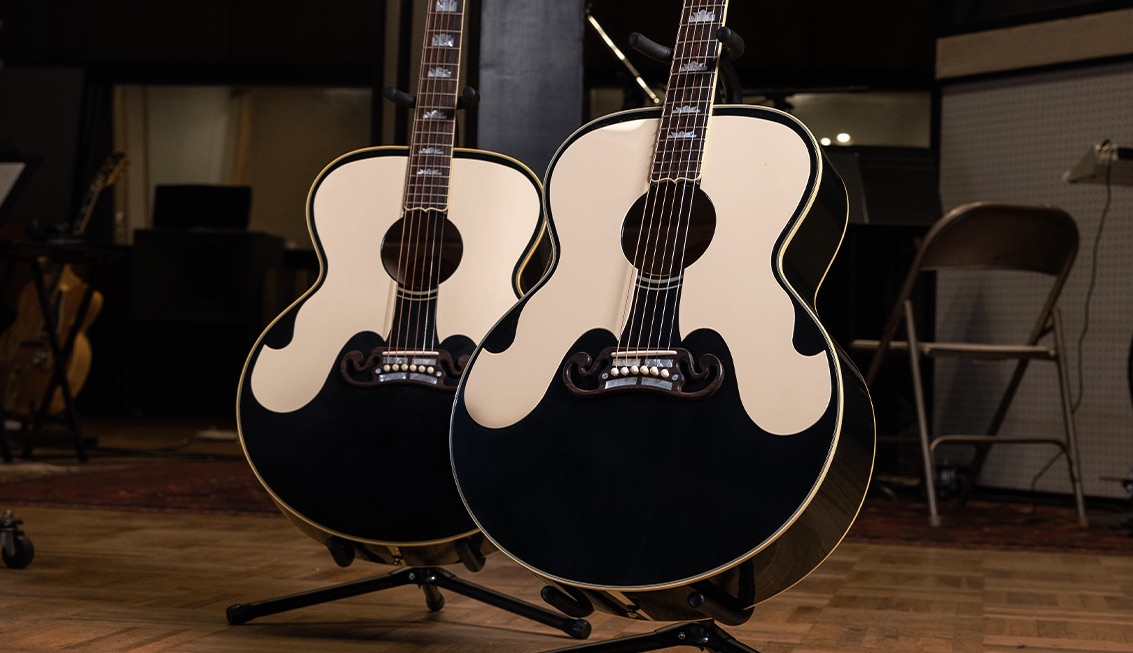
Although Martin stuck with the dreadnought, other manufacturers pushed the flat-top even further. Between 1913 and 1917, Lyon & Healy offered a 22 ¼-inch wide ‘Monster Bass’ guitar, and during the 1930s the Larson brothers made a 21-inch wide Prairie State ‘Big Boy’ model.
While jumbos are usually loud guitars, the bass is well controlled and generally less boomy than a dreadnought
But for reputation rather than size alone, the Gibson SJ-200 exemplifies the ‘jumbo’ acoustic. Gibson had used the term ‘Jumbo’ for some of its larger dreadnoughts, so an ‘S’ for ‘Super’ prefix was added.
After its introduction in 1938, the SJ-200 grew to a width of 17 inches and a 4 7/8-inch depth. Smaller jumbo models including the J-185 and Everly Brothers signature model followed, with a 16-inch lower bout.
Guild is also famous for jumbos including the 17-inch wide F-50 and the 16-inch wide F-40, Taylor offers the Grand Symphony, and George Lowden has added his own twist to the formula.
After numerous 30s and 40s Martin f-hole acoustics had been successfully converted to jumbo flat-tops, the company eventually introduced a 16-inch slim-bodied jumbo in 1977. The Size M was followed by the Size J in 1990, with a 4 7/8-inch depth.
While jumbos are usually loud guitars, the bass is well controlled and generally less boomy than a dreadnought.
In short, they’re outstanding for loud, clear and penetrating rhythm duties. Big Lowdens tick all those boxes, but they have a subtlety, balance and refinement that makes them fingerstyle favourites and well suited to drop tunings.
Size Isn’t Everything
Body dimensions can provide some indication of the tone you might expect, but other factors exert a profound influence, too. Much depends on the tonewoods used to construct the body, and the shape, size and layout of the braces.
And with today’s vast choice of high-quality pickup systems, there is no necessity to buy a large acoustic simply to be heard. Visual appearance and physical comfort also influence our guitar preferences – these days, anything goes.
Huw started out in recording studios, working as a sound engineer and producer for David Bowie, Primal Scream, Ian Dury, Fad Gadget, My Bloody Valentine, Cardinal Black and many others. His book, Recording Guitar & Bass, was published in 2002 and a freelance career in journalism soon followed. He has written reviews, interviews, workshop and technical articles for Guitarist, Guitar Magazine, Guitar Player, Acoustic Magazine, Guitar Buyer and Music Tech. He has also contributed to several books, including The Tube Amp Book by Aspen Pittman. Huw builds and maintains guitars and amplifiers for clients, and specializes in vintage restoration. He provides consultancy services for equipment manufacturers and can, occasionally, be lured back into the studio.

